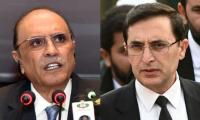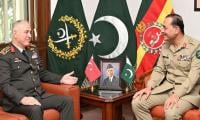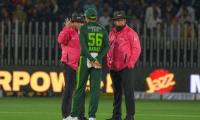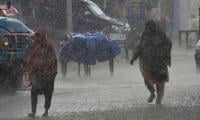In the month that just ended, a man in Faisalabad was sentenced to death for raping and murdering an eight-year-old girl. The case is just one of many which beg our attention towards the heinous crime of child abuse in the country.
During the last days of 2018, a nine-year-old girl in Lahore was raped before being tortured and eventually choked to death with the use of a rope. A few days later at the turn of this year, the suspected murderer of an eight-year-old girl in another city confessed to his crime before an anti-terrorism court. It had only been a year after the nation had mourned the death of Zainab, barely seven years old when raped and murdered. Pakistan’s crusade against such terrible inhumanity, it seems, still has a long way to go.
As I write this grim piece, I come across news of three brothers, arrested for allegedly raping their 15-year-old sister. One of the suspects is a cleric who also delivers sermons online. The suspects had threatened the victim and told her to keep quiet.
Pakistan had already tightened its legislation to protect children in 2016 – criminalising sexual assault, child pornography and trafficking for the first time – after a paedophile ring circulating pornographic videos was exposed in Kasur. Moreover, the use of DNA evidence has proved crucial in the arrest of murderers, especially after the nabbing of Imran Ali, Zainab’s murderer.
After Zainab, the nation opened up on sex education – a taboo topic in a tradition constrained and conservative society. A provincial government decided to introduce child protection curriculum in every educational institute of the province, including supplementary material based on injunctions of the Holy Quran.
UN bodies also issued a revised technical guidance on sexuality education ‘with an aim to enable concerned authorities to design comprehensive curricula that will have a positive impact on young people’s health and wellbeing’.
But where media coverage, acceptability and promotion of sex education, improved evidence collection techniques (at least in major cities) and tighter legislation should have helped curtail the occurrences of this hideous crime, it seems to be growing in leaps and bounds; recent figures and events do not show any improvement in the situation.
Last year, reported cases of child abuse increased by 11 percent as compared to 2017, with more than 10 children suffering some form of abuse every day in Pakistan. These figures have been revealed in the latest report by Sahil, a non-governmental organisation which collects data and spreads awareness about child abuse. The startling data seems to shadow the preventive measures which are gradually beginning to emerge in defence.
The root cause of the problem seems to be a centuries-old mindset, further corrupted by an influx of Western media influence, fuelling the underlying frustration in society.
Women in Pakistan, like in other cultures, have for long been regarded as the dependent and thus the submissive. They have also remained a source of pleasure at the will of men, whether within the confines of a house or outside. Although increased literacy – more in the urban centres – and awareness of their rights has resulted in a large number of women defying many injustices, it is still not uncommon for girls to be raped or killed to restore the ‘honour’ of a family, and of women being harassed at work. But while women have started uniting with each other to raise their voices, children are still easy prey for predators.
With the rise of information sharing on social media, many girls and women have started opening up about their horrific experiences of abuse at the hands of their uncles, teachers and stepfathers. Those who may be undergoing the same at present do not have the resources, the courage or the awareness to admit. There have even been shocking tales of a child’s parent, mostly mother, being aware of the crime, but out of her own weakness or fear of a backlash, preferring to stay silent.
There are also allegations regarding madressahs, where students are given free residence and food along with education. The package deal is highly attractive for poverty-stricken families in rural areas. As a result, the number of madressahs in Pakistan is estimated to vary between 12,000 and 40,000, reaching at least two million children. According to some research there is a sexual abuse problem in many madressahs.
In 2017 – months before Zainab was murdered – at least three cases emerged in the span of one month in southern Punjab. These included the gang rape of a 12-year-old boy by former students of a madressah and the rape of a 10-year-old by a madressah principal.
The major issue remains illiteracy, to some extent, but also mainly a weak base of moral values particularly for men, despite Islamic education being made a part of the curriculum. Sadly, the instructions imparted are mostly learnt by heart, both by the teacher and the student, and hence fail to produce the desired result in, if not all, the majority of boys. Patriarchal and misogynist attitudes at home, society and even the entertainment side of the media, together with a lack of trust in the security provided by the state, further strengthen beliefs that one may be able to get away with a heinous crime like child abuse.
It’s been more than a decade since Pakistan entered the 21st century. The country is still struggling to raise literacy levels for women beyond that of 50 percent, while gender parity at the workplace also remains among the lowest. Even the #MeToo movement has failed to make a significant impact. Pakistan strongly needs to weave its social fabric with stronger threads of communication, respect of values and education. Justice for Zainab has been gained, but more are yet to be protected.
The writer is a freelance journalist.She has a keen interest in issues regarding women, religion and foreign affairs.
Email: shamahf2@gmail.com
India uses Afghanistan as a backstage area to carry out terrorist attacks against Pakistan
Another report by the Pakistan Institute of Peace Studies states that 78 per cent of attacks have been carried out by...
Pakistan stands at the forefront of this crisis, generating a staggering 3.3 million tonnes of plastic waste annually
Today, a total of 11,000 children are attending Daanish schools in Punjab
The emotional instability of parents inculcates a range of psychological issues in children
The current way of dealing with the environment and climate change is no longer adequate







